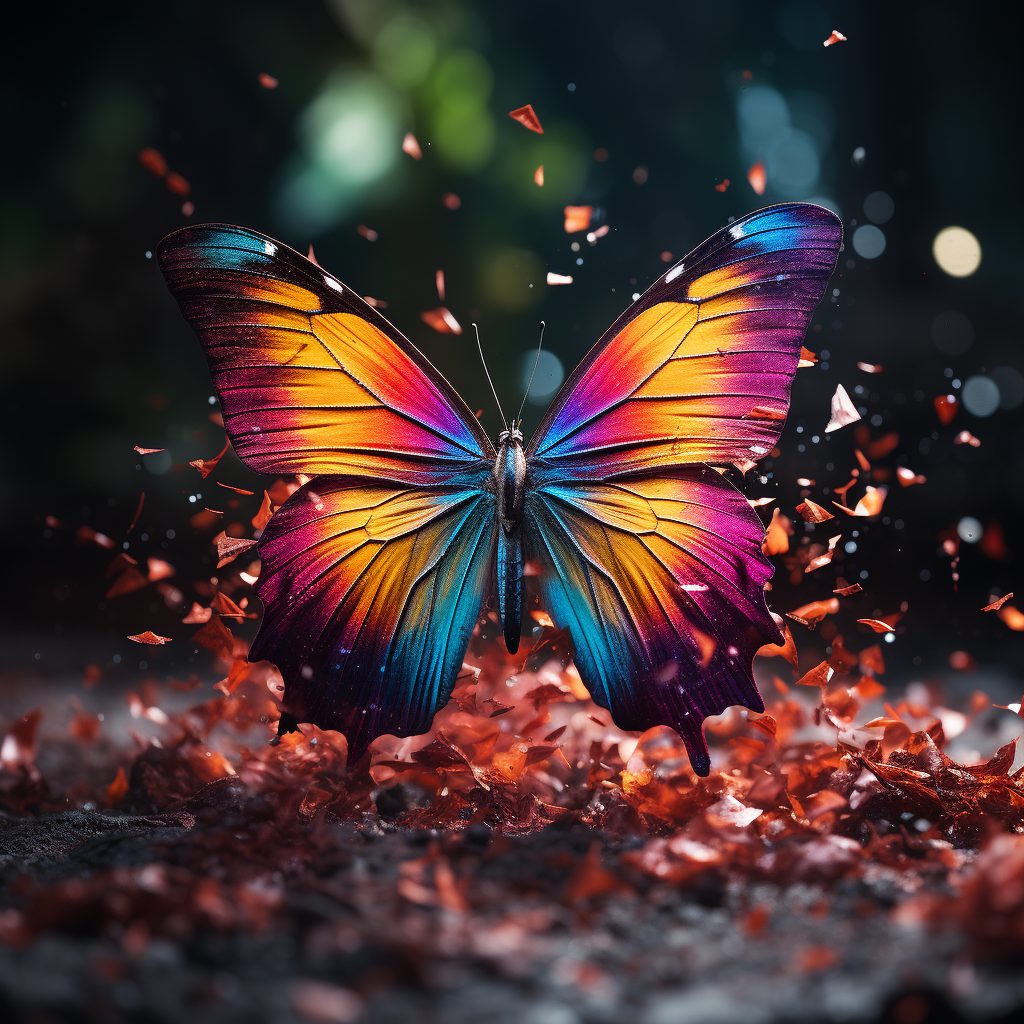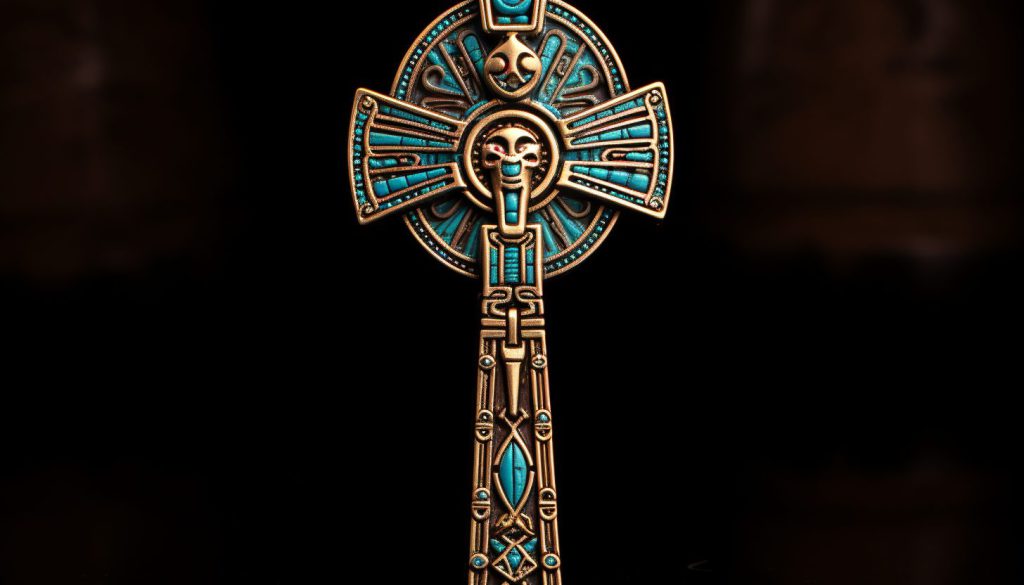Life symbols have been a significant part of human culture and history, serving as visual representations of life’s essence and vitality. These symbols are deeply embedded in our collective consciousness, offering insight, understanding, and connection to the various facets of existence. In this article, we will explore a variety of life symbols, each carrying a unique story and significance that have inspired and guided individuals and communities through ages.
The Ankh, hailing from ancient Egypt, is arguably the most famous symbol representing life. It signifies life, immortality, renewal, and healing with its distinctive cross-with-a-loop design, embodying the essence and joy of life universally.
Ancient and Cultural Life Symbols
- 1. Ankh: The Egyptian Symbol of Life
The Ankh, often recognized as a cross with a loop at the top, is an ancient Egyptian hieroglyph that represents life. It is a powerful symbol that reflects the concept of eternal life. The Egyptians believed that life did not end with death, and the Ankh symbolized both mortal existence and the afterlife. It is often seen in the hands of Egyptian deities, emphasizing their immortality and omnipotence.
- 2. Chai: Jewish Sign of Life and Vitality
Chai is a symbol deeply significant in Jewish culture, representing life and well-being. The word “Chai” translates to “life” in Hebrew. Numerically, it corresponds to the number 18, making this number particularly lucky in Jewish tradition. The symbol is often used in jewelry and art, serving as a visual representation of blessing, expression of joy, and a wish for a good life.
- 3. Sun: Universal Giver of Life
The Sun is a universal symbol that represents life, power, and energy. It is the ultimate life-giver, illuminating the world with its radiant presence and providing the necessary light and warmth for all living beings to thrive. In various cultures, the Sun is worshipped as a deity, embodying vitality, prosperity, and fertility, making it a timeless and global emblem of life itself.
- 4. Tree of Life: Interconnectedness of All Life
The Tree of Life is a pervasive symbol found in various cultures and religions around the world. It represents the interconnectedness of all life forms on Earth. With its roots deeply embedded in the soil and branches reaching out towards the sky, the Tree of Life symbolizes the link between the earthly and divine, the physical and spiritual realms. It is a reminder of the unity and balance inherent in the cycle of life.
- 5. Flower of Life: Sacred Geometry of Existence
The Flower of Life is a geometric figure, made up of multiple evenly-spaced, overlapping circles. This symbol is thought to represent the cycle of creation, encompassing life and consciousness. It is a visual expression of the connections life weaves through all sentient beings, believed to contain a type of Akashic Record of basic information of all living things.
- 6. Feathered Serpent: Mesoamerican Life and Knowledge Symbol
The Feathered Serpent, or Quetzalcoatl, is a prominent symbol in ancient Mesoamerican cultures, representing the duality of life and knowledge. Often depicted as a serpent adorned with feathers, it symbolizes the earth and sky, human and divine. The Feathered Serpent is a guide for life and spiritual enlightenment, embodying the harmonious coexistence of opposing forces.
- 7. Man in the Maze: Journey of Life
The Man in the Maze is an iconic symbol derived from Native American culture, specifically the Tohono O’odham nation. It depicts a human figure at the entrance of a labyrinth, representing the journey of life with its twists and turns. The symbol embodies the challenges, choices, and paths taken in life, ultimately leading to a final destination, often interpreted as a state of harmony or enlightenment.
- 8. Hopi Maze or Tapuat: Symbolizing Mother and Child
The Tapuat, or Hopi Maze, symbolizes the connection between a mother and her child. Its series of concentric circles connected by lines illustrates the child’s journey through life, guided and supported by the mother. The lines symbolize the umbilical cord, providing life and nourishment, while the maze represents the challenges and opportunities encountered in life.
- 9. Triskelion: Progress and Personal Growth
The Triskelion, or Triskele, is an ancient symbol of three spirals or legs radiating from a center. It is often associated with progress and personal growth. The three spirals are interpreted in various ways, such as representing the cycle of life, death, and rebirth or a person’s physical, mental, and spiritual aspects. The Triskelion symbolizes moving forward and pursuing a journey of continuous development.
Natural Symbols Representing Life
-
 10. Water: Essential Element for Life
10. Water: Essential Element for Life
Water is a fundamental symbol of life, recognized universally. It is essential for the survival of all known forms of life, playing a crucial role in the life process. Water symbolizes purity, clarity, and calmness, and it’s often associated with the flow and continuous change in life. Its cleansing and nourishing properties make it a powerful symbol of renewal and rebirth.
- 11. Phoenix: Resurrection and Eternal Life
The Phoenix is a mythical bird that symbolizes resurrection and eternal life, as it is said to be reborn from its ashes after dying. This symbol represents the cycle of death and rebirth, emphasizing the idea of immortality and the eternal nature of the soul. The Phoenix is also a symbol of triumph over adversity, as it rises renewed and stronger from the challenges it faces.
- 12. Storks: Harbingers of New Life
Storks are often associated with delivering babies and bringing new life, making them a universal symbol of birth and renewal. In various cultures, the stork is believed to bring happiness and prosperity along with the arrival of a new child. Their careful and nurturing behavior towards their offspring further emphasizes the themes of motherhood and family.
- 13. Eternal Life Flower (Lotus): Purity and Spiritual Awakening
The Lotus Flower, often referred to as the ‘Eternal Life Flower’, is a powerful symbol of life, purity, and spiritual awakening. In various cultures, it represents the purity of the mind and soul, emerging untainted and beautiful from the murky waters of materialism and attachment. The unfolding petals of the lotus are said to symbolize the expansion of the soul and spiritual enlightenment.
- 14. Green: The Color of Growth and Vitality
Green is universally recognized as the color that symbolizes life, growth, and vitality. It is the color most associated with nature, representing the energy of life and the renewal of spring. Green also symbolizes balance and harmony, providing a sense of stability and calmness. Its association with health and prosperity makes it a positive and life-affirming color in various cultures around the world.
Artifacts and Objects as Life Symbols
-
 15. Scroll: Symbol of Life and Knowledge
15. Scroll: Symbol of Life and Knowledge
The scroll, often depicted in ancient art and mythology, is a symbol of life and knowledge. It represents the unfolding narrative of life, wisdom passed through ages, and the sacredness of one’s life story. Scrolls are often seen as carriers of important messages and decrees, embodying the power and sanctity of words and knowledge.
- 16. Torch: Enlightenment and Life’s Passion
The torch is a potent symbol of enlightenment, guidance, and life’s burning passion. It illuminates the darkness, providing direction and clarity. In various cultures, the torch represents life’s energy and the fiery spirit of humankind, driving individuals to explore, discover, and create, thus celebrating the vibrant essence of life itself.
- 17. Flame: Spirit and Vital Energy
Flame symbolizes the spirit and vital energy of life. It represents transformation, purification, and the eternal flame of life burning through generations. The flame is also a symbol of sacred fire in many religions, embodying divine energy and protection. Its dynamic, flickering light symbolizes the vitality and transience of life, urging individuals to live passionately and consciously.
Global and Religious Life Symbols
- 18. Goat: Fertility and Vitality
The goat is a universal symbol of life, fertility, and vitality. In various cultures, the goat is associated with provision, sustenance, and life’s abundance. Its robust energy and ability to adapt to harsh environments make it a symbol of resilience and the relentless force of life.
- 19. Sei (生): Japanese Character for Life
The Japanese character ‘Sei’ (生) represents life, birth, and living. It is often used in various contexts related to life’s processes and living things. This character embodies the essence of life’s vitality and the continuous cycle of birth, life, and renewal.
-
 20. Butterfly (Choho): Transformation and New Beginnings
20. Butterfly (Choho): Transformation and New Beginnings
The butterfly, or ‘Choho’ in Japanese, is a universal symbol of transformation, new beginnings, and the fleeting beauty of life. Its metamorphosis from a caterpillar to a butterfly represents life’s transformative journeys and the potential for renewal and rebirth that exists within all living beings.
- 21. Aum (ॐ): The Sound of the Universe and Life
Aum, or Om, is a sacred sound and spiritual icon in Indian religions. It is often chanted at the beginning and end of yoga sessions and symbolizes the essence of the ultimate reality or consciousness. Aum represents the universe’s past, present, and future, embodying the essence of life itself.
- 22. Dharma Wheel (Dharmachakra): Path of Enlightenment
The Dharma Wheel, or Dharmachakra, is a symbol associated with Buddhism and Hinduism. It represents the cycle of birth, life, death, and rebirth (samsara) and the path toward enlightenment and liberation from it. The wheel’s eight spokes symbolize the Noble Eightfold Path of Buddhism, guiding individuals to live a life of balance and moral integrity.
- 23. Tau (Τ, τ): Ancient Greek Symbol of Life
The Tau is the 19th letter of the Greek alphabet and is associated with life and resurrection in various mythologies and religious traditions. In ancient times, it was used as a symbol of life and was believed to have protective and curative powers, often used to mark individuals or objects deemed sacred or significant.
- 24. Quetzalcoatl: Aztec God of Life
Quetzalcoatl, often depicted as a feathered serpent, is a prominent deity in Aztec mythology. Representing the boundary between the earth and the sky, Quetzalcoatl is a symbol of life, light, wisdom, and fertility. He is believed to have contributed to the creation of mankind and is associated with the winds and the dawn, embodying the life force that sustains and regenerates.
- 25. Shou: Chinese Sign for Longevity and Life
The Shou symbol is a significant and auspicious sign in Chinese culture, representing longevity, life, and good health. Often found in art, architecture, and various artifacts, the Shou symbol is commonly used to convey wishes for a long and healthy life. Its unique design is easily recognizable, with a stylized, circular form that is both simple and profound in its implications.
Conclusion: Embracing Life Symbols
Life symbols offer a visual representation of the complex, multifaceted concept of life itself. From ancient and cultural icons to natural and religious symbols, each sign carries a unique set of meanings and significance that have been revered across different cultures and time periods. Embracing these symbols allows us to connect with the universal aspects of life, providing insight, understanding, and a sense of belonging and continuity within the tapestry of existence.
Whether it’s the Ankh, symbolizing life and immortality, the serene and pure Lotus flower, or the dynamic and transformative Phoenix, these symbols serve as reminders of life’s beauty, resilience, and transcendence. They inspire reflection, offer comfort, and encourage a deeper appreciation and reverence for life in all its forms and manifestations.
By exploring and understanding these symbols, we not only celebrate life but also acknowledge its sacredness and the shared journey we all undertake. In doing so, we foster a sense of unity and interconnectedness, essential for navigating through life with wisdom, grace, and compassion.

